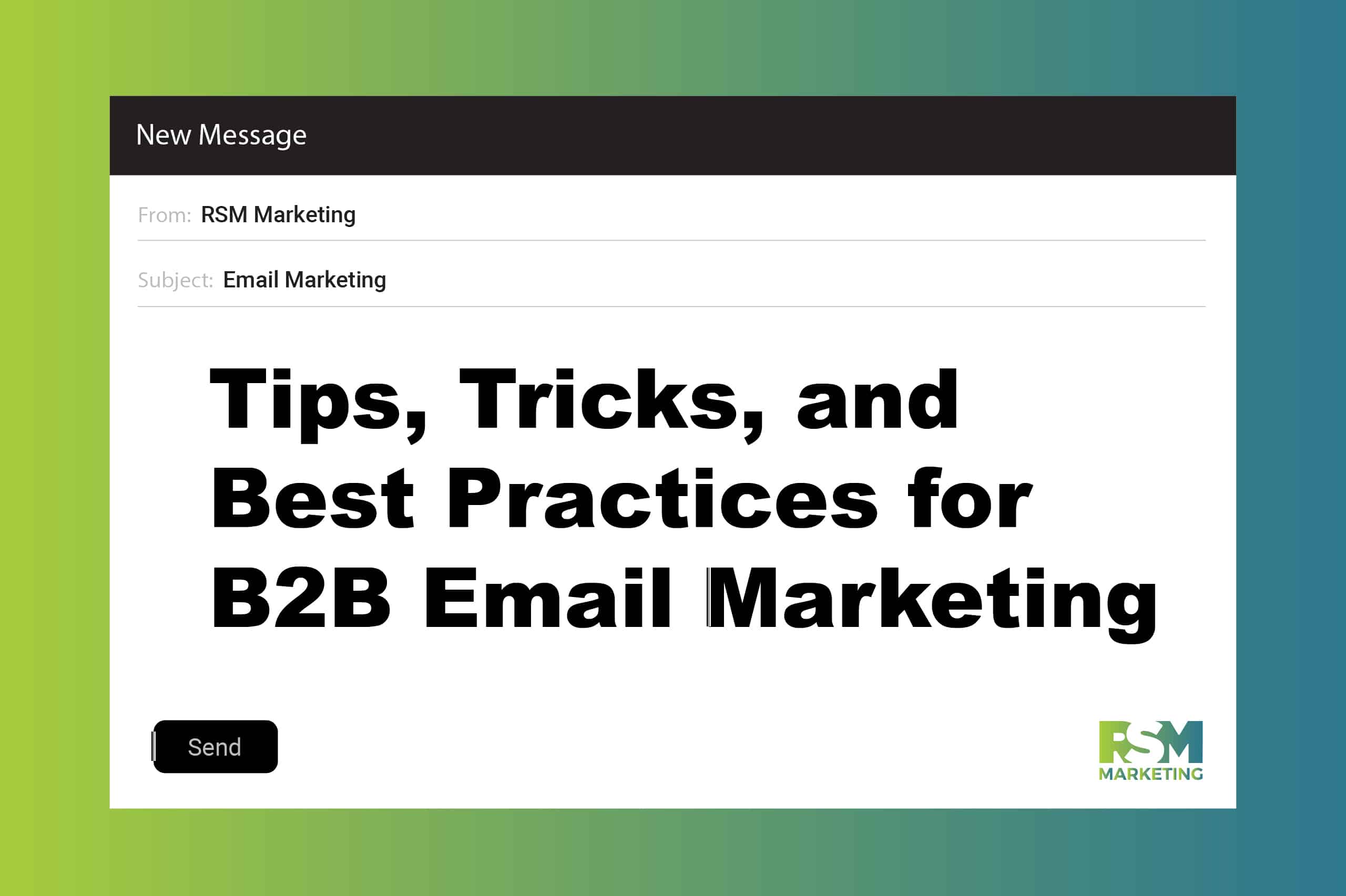Marketing Insights

If you talk to any business owner, you’ll typically hear them say they want more customers. Different companies will use different methods to try and grow their business, finding new and exciting ways to entice people to use their company for the product or service they need.
It’s important to understand that you cannot rely on your existing customers to grow your business, which is why it’s always necessary to bring in new ones. In this post, we’ll look at pay-per-click advertising, and how it leads to lead generation, as well as how companies can use this to their advantage.
How Can You Use PPC To Generate High-Quality Leads?
- Set up proper URL tracking
- Find out where your new clients could be coming from
- Target the relevant keywords to your company
- Filter out any irrelevant keywords
- Use ad copy to pre-qualify visitors
- Make adjustments for mobile performance
- Research your competitors to find some keyword inspiration
- Make custom landing pages for each ad group
- Create an ad schedule
- Break your marketing campaign up into groups
What Is PPC?
Before you can understand how PPC lead generation works you need to understand what PPC is. To put it simply, it’s a model used online that allows companies to direct more traffic to their site. This is a marketing tool that is used by companies in order to get more customers and help grow their business.
How Does PPC Work?
Now, let’s discuss how PPC actually works. An advertiser will pay a host website in order to place an ad on their website. When the ad is clicked, the advertiser then pays a sum of money to the host website. Really, what this means is that the company who is advertising their business ends up essentially buying website visits, rather than using other organic methods.
One of the most popular types of PPC is through search engines. Advertisers can bid for a spot on the search engine’s sponsored links when certain keywords are typed into the search engine. This means that every time someone searches a specific term, the company’s ad is going to show in an attempt to entice the user to click it and be redirected to the website.
How Does PPC Generate Leads?
Set Up Proper URL Tracking
How are you going to measure how successful each of your ad campaigns is if you are not tracking them? You need to make sure that you have set up proper URL tracking for each and every one of your ad campaigns so that you know which ones are working, and which are not.
This way, you can continue using and paying for the ones that are bringing you high-quality leads that turn into conversions, and get rid of the ones that are flopping and just costing you money. By doing this, you are going to be able to see the keyword that they searched for, what device the user was on, which site and campaign brought them to your website, and so on.
You will find that the best thing you can do if you want to track URLs is to use something called UTM Parameters and ValueTrack Parameters. These tags are data, and you put them at the end of your landing page URL, which is how you track and use all the information that we talked about above.
Find Your New Target Opportunities
The next thing that you want to think about is where your new customers could potentially be coming from. What kind of websites and search engines do you want to choose? Using the trackers that we talked about, you can get all the necessary data that you are going to need to figure out where the most opportunities are coming from. You’ll want to know how many opportunities come from a particular ad, the customers that you have won from each of these sources, what kind of keywords were they looking for and what device they were using.
From here, you are going to be able to figure out which are the poor-quality leads and which are the high-quality ones. Some people use scores to work this out, and if this is what you are planning to do, then you simply need to look for the lowest scoring campaigns. If not, then you are going to have to look at leads that have “invalid” or “junk” in the data name, or the email.
Target The Relevant Keywords
You are going to want to spend a fair amount of time trying to get this right because relevant keywords are going to be right at the center of any successful campaign. There are plenty of keyword search tools online that you can use to help you figure out which are going to be best to help your company, and which are going to provide you with poor-quality leads.
To find the best quality leads for your business, put yourself in the mind of the searcher. If they are typing in something like ‘Kitchen cabinet installation service’ then you know that they are looking for kitchen cabinets installation services.
However, searches like ‘kitchen installation’ may be harder to decipher. They could be looking for a guide on how to do it themselves, or they could be looking for services in their area. So you need to make sure that you are sitting, and thinking, like a searcher when you are identifying and targeting the relevant keywords.
You can also look into long-tail keywords. These are words or phrases that have more than four words in them, and if a searcher is using them, they have probably already done their research into the topic. These people are going to be your best bet and probably will be the highest-quality leads of all because they know what they are looking for online.
Say Goodbye To Irrelevant Keywords
So, we just looked at how you can identify and target keywords that are more likely to provide you with higher quality leads, but now we need to look at how you can limit the number of clicks that you know you don’t want. Finding irrelevant keywords and completely filtering them out of your ad campaigns is important. You can access your Search Terms Report, which will show you what keywords people are using to find your business, and take a look at the number of irrelevant clicks that you are getting.
If you find that there are clicks happening that are completely irrelevant, you can add these words to your negative word list. This sends a message to the search engine that you don’t want your ads to be displayed when these keywords are being searched for because they are irrelevant. Your ad will no longer appear where these words are used, and you are going to keep poor-quality leads at bay.
Use Ad Copy To Pre-qualify Visitors
One of the mistakes that a lot of companies make when they are creating their ad copy is that they design it with the sole focus on getting as many clicks as possible. Now, while you want clicks, you only want high-quality ones that are going to turn into purchases, and this is not what you are going to receive if your ads do not pre-qualify visitors. To make sure that you are doing this correctly, there are a few things that you are going to want to include in your ad copy.
- Industry: if you work within specific parameters, then make sure this is clear. This is going to work well with a segmented campaign and relevant keywords.
- Target Audience: Another thing that you should try to do is make it clear who you are targeting with this ad. A simple way to do this is to add in phrases such as ‘for small business owners.’ By doing this, you are filtering out larger companies.
- Price: A lot of companies don’t want to put a price on their ad copy because they feel like it will discourage people. However, using your prices could be a great way of generating higher quality leads because you will be getting rid of anyone who doesn’t have the budget for your services.
- Business Size: Make sure that it is known what kind of businesses you are targeting if you have a specific type. Otherwise, you are going to get people from all size businesses clicking on your ad, only to realize that you are not what they are looking for.
Make Adjustments Using Mobile Performance Data
We talked about device tracking and how this can be useful when it comes to figuring out what devices are driving more opportunities for your business. Because of this, you are now going to be able to see what devices seem to be working for your company and which are not.
If mobile is not providing you with a lot of opportunities, then you now have the option to make an adjustment and stop running your campaigns on mobile devices. Alternatively, if you don’t want to stop running them on mobiles completely, you do have the option to just reduce the frequency and allow desktops or tablets to receive the majority of the ads.
Looking At Your Competitors Campaign For Keyword Inspiration
There is nothing wrong with looking into your competitor’s strategy to see what they are doing if you have noticed that they are getting a lot of high-quality leads. Obviously, you are not going to be able to outright copy them, which is why you are going to need to make it similar without being too obvious. Use some of the same keywords that they have been using and take a look at the call-to-action on their ads. Just be careful and ensure that you don’t use any of their branded keywords by accident because this is the kind of thing that Google will penalize you for, and you could lose your reputation as a credible business.
Custom Landing Pages For Each Ad Group
The second the visitor lands on a landing page, you are going to have to pay the host site for the click, so you want to make sure that they are getting to the right place straight away. Studies have shown that if a person has to try and navigate your site to find what they are looking for, they are more likely to use another website.
For this reason, you should be creating tailor-made landing pages for each ad group. So, if a client has been directed to your site from a specific ad group, they will be greeted with one landing page, and if someone is directed from another ad group, they will land on a different page than the other group. You want to be maximizing conversion potential from your high-quality leads.
It’s important to note that if you are working with a whole range of different ad groups, creating a tailor-made landing page is not going to be an option. In this case, just make sure that you are breaking the landing page up into subheadings so that it is easy to navigate and find what they are looking for.
Ensure that you are making the landing page as attractive to new visitors as possible. You need to figure out what is going to drive the most results and to do this, you will need the data we talked about. Try putting some offers straight in front of them on the landing page to entice them. This could be anything from a free trial to a demo, depending on what it is your company is selling.
You should also make sure that you are A/B testing your landing page to see which variants of the page are bringing in the most conversions, ROI and customers. Don’t do this as a whole page, though, because it won’t give you the results that you are looking for. Instead, you want to test each element one at a time. Make sure that you are testing these four things at the very least:
- Call to action
- Headline
- Form
- Background
Create An Ad Schedule
If you are scheduling your ads, you will be able to analyze them based on days, hours or whatever you want to do. You may be running ads twenty-four hours per day, seven days a week, but this doesn’t mean that you shouldn’t have a schedule. By looking at days and hours individually, you will be able to see what day of the week, and then even more refined into what hours of the day are providing your business with the most opportunities. You can then use this to refine how much you are bidding for lower providing segments, or stop running them at all. In turn, you are only going to receive higher quality leads, at the correct times of the day.
Segment Your Ad Campaigns
This is arguably one of the most important elements of PPC lead generation, which is why we’ve saved the best for last! How do you segment your ad campaign? Really think about that. Don’t create a group for every product or service you provide. While this sounds like a good idea, it isn’t.
You can segment every single main feature, benefit, geographic location if applicable, target industry and sub-category. Once you’ve thought about what segments you want to create and use, you can then move on to thinking about the assets that you will need such as keywords and landing pages.
Why PPC Is Good For Lead Generation
Why is PPC good for lead generation overall? Well, it makes your website more visible to people who might not have otherwise found your site in the first place. For example, if they see your search ad or display ad, they’re seeing it because you chose to advertise it. Even though you are paying for them to come to your website, if you have set your campaigns up properly, you are still going to be getting plenty of high-quality leads streaming to your website each day.
PPC makes sure that you have a platform to advertise your business. It allows you to branch out and put your ads in places that see more traffic than any other parts of the internet.
PPC is quite a complex topic to understand, but once you know how it works and how to make improvements, it’s going to provide you with results. Investing in PPC marketing is one of the best ways to generate high-quality leads!
Want Some Help?
That’s what we’re here for! Whether you need some guidance on moving in the right direction or a whole lot of marketing muscle—the experts at RSM Marketing can make it happen.
Start with a simple conversation! Complete the form and one of our team members will be in touch.




